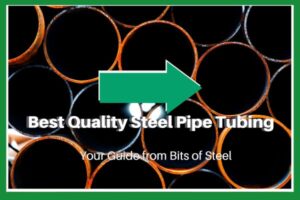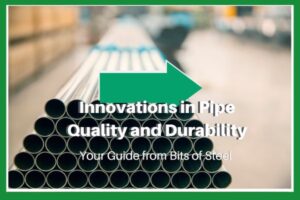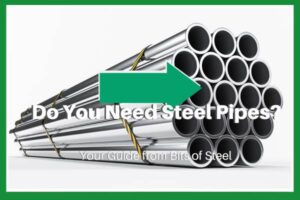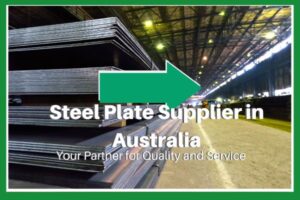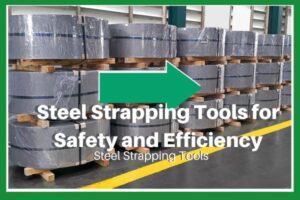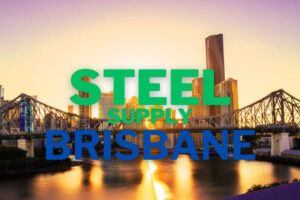The story of Australia’s steel is one that has played an important role in our own history. As a large continent, with increasing needs for rail and industry as it grew throughout the 19th century.
We needed more than just ships or boats; but also metal which could be used to build things like bridges and buildings too!
Steel has long been an important part of Australia’s history. As a large continent with expanding rail and industry, there was more need for steel supplier Australia as it became available late in the 19th century towards the end of that decade.
A Challenging Start
In 1840, ore deposits were found at Iron Knob in South Australia. Despite this find being promising for an industry that would later become one of the most important industries in all of Australia and abroad.
No successful manufacturers existed because pig ironmakers couldn’t make good quality metal with what they had available; mainly low-grade rocks like coke which proved very ineffective when trying to smelt them together into anything useful or usable without much hassle (and often times didn’t work).
Even though there were a few scattered discoveries of raw materials in Australia during this time, the lack of technical expertise and limited material meant that these manufacturers couldn’t compete with British steel imports. By the 1870s most Australian steelmaking had stopped due to these factors combined together!
The Next Century
The need for locally manufactured steel became too hard to ignore, and so in response, Australia began their own manufacturing boom.
The story begins with an increasing global demand that spelt trouble on both sides of the Pacific, but it soon turned into an opportunity when Australian entrepreneurs saw how close they could get things like cars or ships built right there at home instead!
In 1901, Australia’s first blast furnace went into production at Eskbank near Lithgow. This was led by William Statford and his son Esk, who helped make Australian steel a reality!
The first blast furnaces in Australia were built thanks to coal and iron ore mined from South Australia. By 1938, there were four modern steel-making ovens that operated solely for manufacturing purposes – this became the norm as well because of these advancements! The country’s industry boomed with its creation; it is now one among many things we export around the world, such as wine or cars.
Steel Manufacturing Success
The steel industry in Australia has been thriving for a few decades now. In 1915, the first fully integrated steel mill was opened by BHP at Newcastle, which used locally mined coal and iron ore to produce its product. Over time more works were built along with Port Kembla near Sydney as well as one called Whyalla in South Australia, where all these products are made into sheets that can be used anywhere around our country!
Post War Manufacturing Success
Steel manufacturing increased in demand after the Second World War, specifically sheet steel for car and appliance production. The need to cut tubing & piping across Australia led us into an agricultural economy that depended heavily on this type of industry; it is no surprise then why Brisbane became so important with its construction boom during these years when Story Bridge started up – finishing just before WWII ended!
Steel production in Australia rose during the 1960s and 1970s, peaking at 10 million tonnes per year. The industry’s growth was due largely to increasing demand for products like cars (which accounted for 28% of all exports) as well as appliances – which consumed 50%. However, there were also major structural changes made possible by this new technology that allowed engineers access to more affordable materials than ever before; these advancements led them down a path where they could build houses, not just Pavilion but with concrete panels too!
A great example can be seen today at Toowong Village, which houses many historic buildings from around Queensland’s oldest city:
The Great Change in 80s’
The 80s were a time of huge shifts in the manufacturing industries around Australia. Many companies began opting for off-shore production, and they could acquire top-quality goods at lower prices than if made locally or even internationally (i..e: China). Steel was no exception to this trend as well–with many producers moving operations overseas due not just cost considerations but also environmental regulations put forth by our government that make it difficult on us here.
The Australian steel industry was in a crisis. Millions of tonnes were being exported instead of produced, and manufacturers needed to do something about it before more jobs were lost forever!
80’s environmentally sustainable
Makers introduced new techniques that helped increase productivity at inefficient mills while closing down those who weren’t efficient anymore – all this so Aussie consumers would have plenty on their shelves when they went shopping every week.
The steel industry was under increasing pressure to become more environmentally sustainable. The production of harmful byproducts had long been a problem for them, and soon they began finding ways to reduce or reuse these substances in order not only to meet current standards but also future legislation that is being passed around the world regarding climate change, among other things
The 1980s were a dark time for the steel industry, but Australia’s innovative world-class practices and technologies saw them through.
Australia Steel Industry Today
The steel industry in Australia has been streamlined to become more efficient. Much of the country’s manufactured off-shore and then shipped here for processing while constantly striving towards reducing greenhouse gas emissions through recycling programs like they’ve got going on now where we’re at with our most recycled product worldwide – which just so happens be iron or Steel!
The steel manufacturing industry in Australia uses highly efficient processes, as evidenced by companies such as Bits Of Steel.
However, there are still many challenges with sending our iron ore abroad to be processed into Australian-made products that will then have their own additional expenses and inefficiencies associated when they arrive back here again for our use locally – not only is this practice environmentally damaging but also financially costly too!
That’s why we at ‘Bits’ strive so hard every day to ensure quality control over all aspects during production; because you deserve nothing less than premium Aussie-made goods if it costs extra due diligence on your behalf.
Steel is a necessary ingredient for many products, and the Australian steel industry needs to work closely with both local governments as well as government officials in order to ensure greater opportunities.
Final Words
The industry-leading Bits of Steel has provided quality profile and oxy cutting for over few years. With more than 5,000 tonnes in stock and ten modern machines that can cut steel exactly how you want it, they’re an expert at what they do! Contact them today if your project requires a little expertise from one such team member who is committed to providing only top-notch service the day after tomorrow.
Australia is home to some of the best steel in all of Asia, and it’s not hard to see why. With so much variety available at your fingertips, you are sure to find what suits any need! Talk with us about getting started on that project today by contacting Bits of Steel, where we have years’ worth of experience handling every type imaginable–the experts will take care from there.
What kind do I need? Well, if you say hello, then maybe just tell me how many square meters (or feet)and whether it’s indoor or outdoor furniture etc., once again talk to us.


